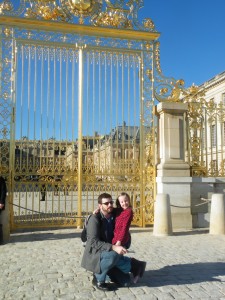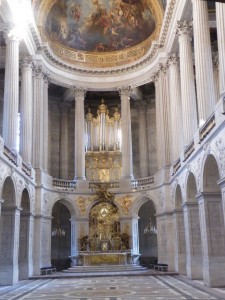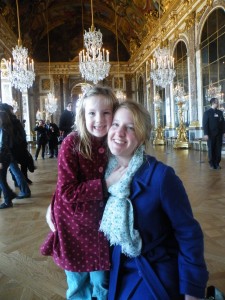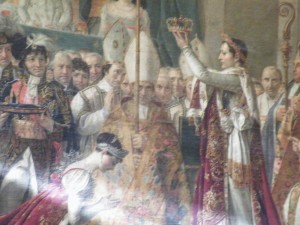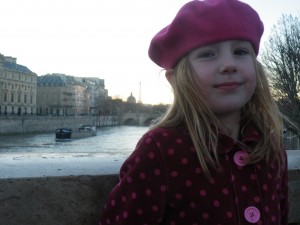I booked our trip to Paris only three weeks before we went. I hesitated over the expense, and then, at the risk of sounding maudlin, after the Tucson shootings, I was relieved we were going. I wanted light, beauty and inspiration. Paris espouses all of those qualities. When the Eiffel Tower lights began to sparkle as we glided past in our Bateau Mouche, the iron lattice looked like uncorked champagne, bubbling over with the excitement of just being. And to think, what is now France’s greatest visual export was once reviled. But everything changes.
This was my third trip to the City of Lights, and seeing the Eiffel Tower felt deliciously renewing. There is light all over Paris, towering over the Seine or crisscrossing through dark, quiet galleries not far from the Eiffel Tower. David Hockney’s “Fresh Flowers” exhibit was a statement about light–the light from the screen of his iPhone. Our entire trip was driven by this exhibit, which was so soft-spoken in its vision. It did not disappoint. There were three quiet rooms with a few dozen iPhones mounted to the walls. The drawings flickered and even unraveled–the programs were played backwards so you could see how Hockney created the images. This is a new kind of digital art. Fluid. Dynamic. It can be emailed. And no one has figured out how to commodify it yet. Even Hockney acknowledged that he doesn’t know how to sell these works. They’re not tangible like a Van Gogh canvas. Nothing was nailed to a frame or spilled or marred with filthy fingerprints in its creation. Who wants an original masterpiece emailed to them anyway?
The Hockney exhibit reminded me of Impressionism, another art form grounded in light and in Paris. Sadly, I have no photos of our time at the gallery. Parisians are prickly about photography in galleries. Watching the images change on iPhone screens positioned on walls felt so incredibly modern. This wasn’t at all like watching drones stare at their iPhone screens on the bus. While in the gallery, I loved the light from the iPhones and how it accentuated the colors. I loved Parisians’ fascination with light and I loved their curiosity with modernism–their willingness and struggle to go forward. You see this in the Eiffel Tower, a structure built for the 1900 World Fair to welcome the 20th century. You see this in Victor Hugo’s social commentary in Les Miserables. You see this in Versailles, which was attacked by those trying to grasp a more modern and different future. Touring Versailles was interesting because it felt like visiting the ornate grave of someone you had tried to love and had failed. And you know how the story ends. The middle class traipse all over a building designed to keep them out. Change won.
